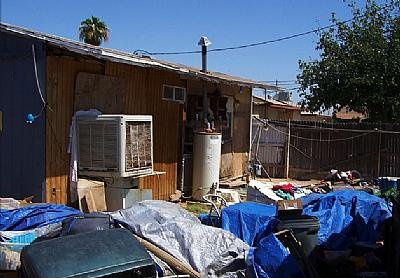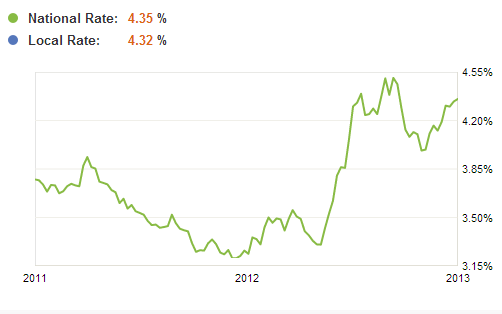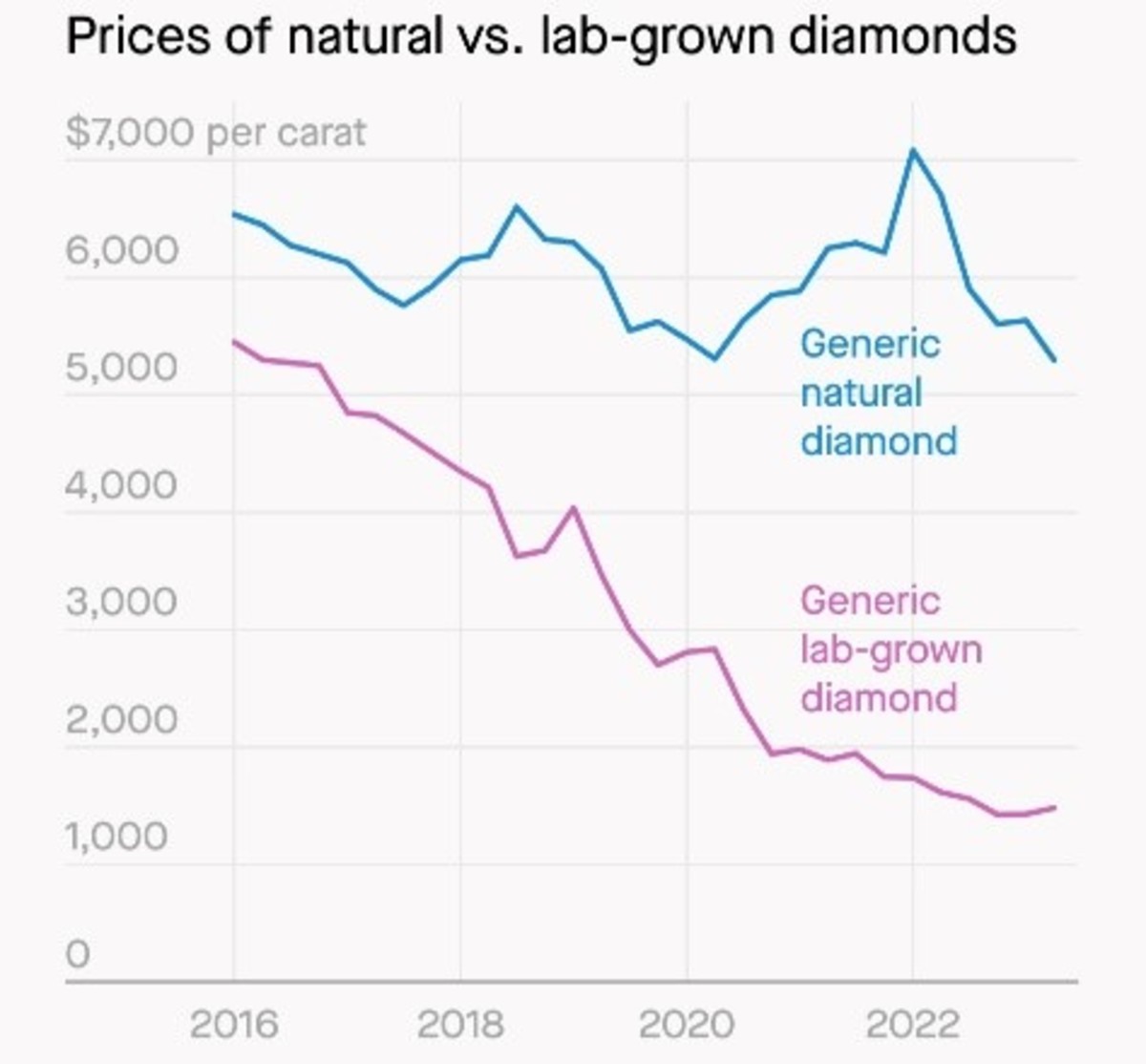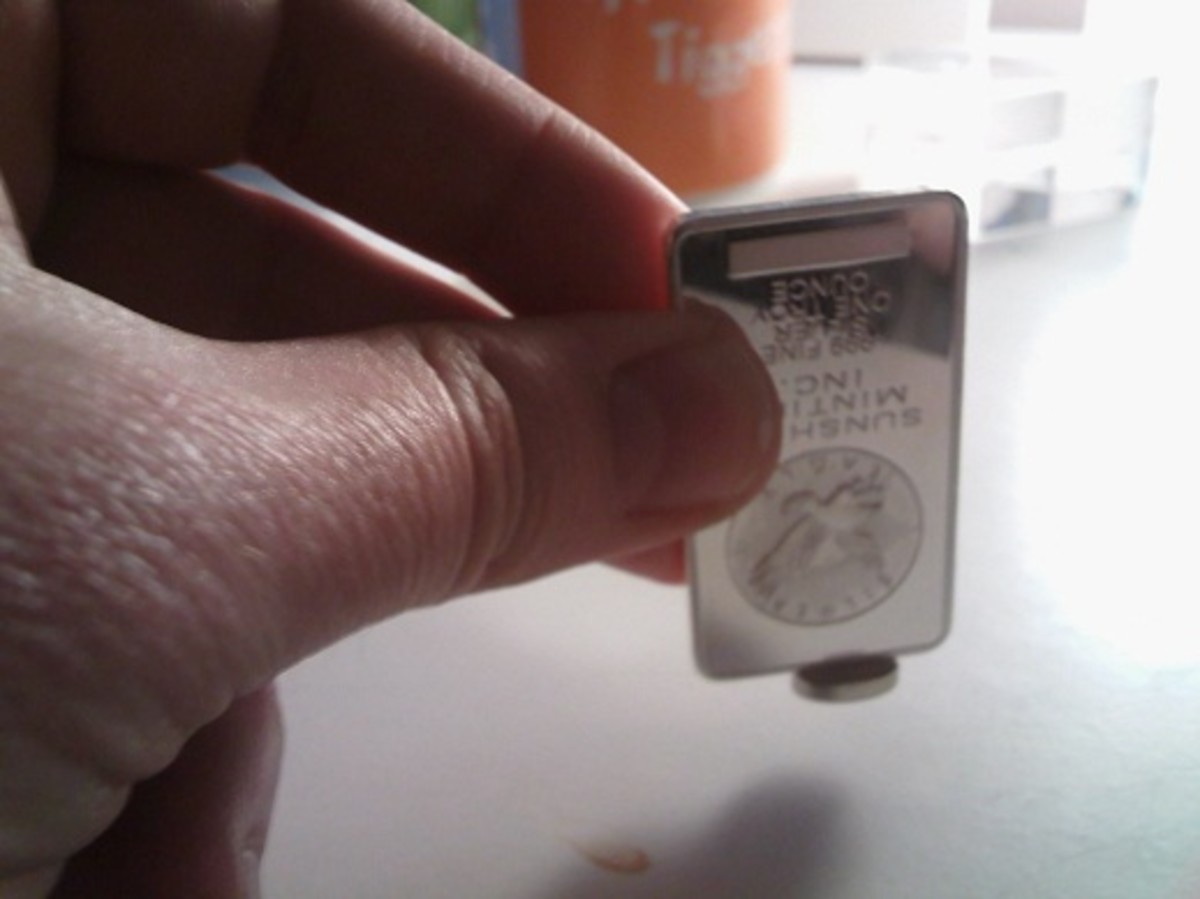The Mortgage Crisis - How It Happened

The Mortgage Crisis - Introduction
So the mortgage crisis happened in 2008 and is arguably the main instance that triggered the global financial crisis and the great recession. How did this happen? Explaining it in a way for the average person to understand is difficult but very important. With an understanding of what happened we can hopefully avoid this type of disaster in the future.

Loan Valuation and Loan Sales
Let’s start with a full example of one persons experience with the mortgage collapse. This is the complete journey of a mortgage and how it travels from one lender to another and from one bank to another. I credit Michael Phillips of the Wall Street Journal with the following from 2008:
“A shack in Arizona is owned by a woman who hasn’t worked in 13 years was valued at $130,000 two years ago by a crooked appraiser and mortgaged by a broker who was paid $10,000 in fees and took no loan risk.
Then the loan was then tracked through Wells Fargo to HSBC, where it was packed into a mortgage-backed security, rated Triple-A by Moody’s and S&P, and sold to, among others, the Oklahoma Teachers pension plan and PIMCO.
Two years later, after the foreclosure, the shack was recently sold for $18,000. The current owners of the loan might get 10 cents on the dollar.”
(Source: http://articles.businessinsider.com/2009-01-02/wall_street/30006373_1_risky-mortgages-mortgage-backed-security-loan – Michael Phillips)

This is a sad story, but I will explain it step by step.
Step 1. Fist off the initial valuation of “the shack” was grossly miscalculated. Here is why that happened. Banks will decide the amount of money they will lend based on an appraisal that is done by an independent third-party. They take into account factors like the size of the building or location, but the report will often leave out the condition of the building and if any major repairs need to be done. So when the banks have an appraisal come in and they are not done responsibly, the building can become over-leveraged and a loan that is not able to be sustained over time is issued.
Mortgage brokers are paid a fee to bring borrowers and lenders together. They will work with multiple lenders as freelance agents. A good mortgage broker is a good salesman and can can usually find a lender for any type of credit, no matter how bad it may be.
Step 2. So now this woman from Arizona, who hasn’t had a job for 13 years, has a loan that is backed by her “130,000 Dollar Shack.” So who owns this loan? Who is this woman paying? It seems as if it was first Wells Fargo but then they sold this loan to another bank, HSBC. But wait, how is a loan sold from one bank to another? Here’s how and why:
Say a bank has $200 million portfolio of loans. Every month the bank makes a bit of money when all the bowers make their payments. These payments are a source of cash flow to the bank, and earn the bank more on interest than what they pay to their other customers who make deposits. This is how banks work. If they need a large source of cash quickly they can access it is by selling part or all of their loan portfolio. Selling assets is the way a bank grows, and here these assets are mortgage loans. The opposite can also be true for a bank if they have a large amount of cash on hand and want to exchange that for a future income and steady profits.
With this now explained, we will go back to our story. So Wells Fargo sells this loan and a probably a large amount of other loans to HSBC. What does HSBC do with it?
Video: SubPrime Mortgages Explained Quickly
Mortgage Backed Securities and Foreclosure
Step 3. HSBC creates mortgage backed securities. Now, what the heck is that? A mortgage backed security is a huge bundle of loans, thousands and thousands of them, if not more. Think of them like a government bond, it is an agreement to pay an unchanging amount of interest for a set amount of time. So everyone's monthly payments on their outstanding loans act as the monthly revenue cycle that pays the investors who have purchased security. Here comes an important part – how risky are they? Well since there are thousands and thousands of different loans in a security the investors figure that the bond is not valued only the credit-merit of one borrower, but on combined creditworthiness of all borrowers in a security. These securities are rated on their riskiness by independent agencies. In this case Moody’s and S&P. They gave it a Tripple-A rating, the highest and “safest” one could have.
Step 4. Since these are now rated as safe investments, Wall Street firms, like Bear Stearns trade them. In this case the Oklahoma Teachers Pension Plan thought that buying into this asset would yield higher returns than other forms of investment and were safe bets. After all these are teachers pensions. But lets not forget one very important detail, at the very beginning of our story a woman from Arizona, who has not held a job in 13 years was approved for a loan based on the fact that if she couldn’t pay, the bank could foreclose on her “$130,000 Shack.”
Step 5. Well guess what happened to our little ray of Arizona sunshine. She couldn’t pay her loan (Probably due to the fact that she was not employed by anyone) so who ever owned her loan at this point has to foreclose on her home and collect the remainder of the outstanding loan from the sale. But her home was not worth the $130,000 it was originally appraised at (See Step 1). It was only worth $18,000, and on top of it, the owners were not a bank, but groups and entities of independent investors like the Oklahoma Teachers Pension Plan. Now if this was the only case of this happening, no big deal. Our Arizona sweetheart could not have single handedly brought the worlds economy to its knees. But it wasn’t just her. This was happening to individuals and family’s all over the nation. More often than not, their interest rate skyrocketed after a couple years because they were able to get a loan for zero down payment and have a very low interest rate for the first couple years. People had to foreclose left and right when this happened.
Video: The Credit Crisis Visually Explained
The Panic and Meltdown
Step 6. Now these mortgage backed securities were quickly being realized as not having as much value as everyone thought. If you multiply the case study of our Arizona Wildcat by 100,000 you get actual home values much lower than that of the “appraised home values.” The losses were staggering. Panic started to set in. People were losing their homes, their pensions, and their life savings all at once. Because of the panic the stock market crashed at an unprecedented rate. Financial institutions were failing, the insurance companies who backed the securities that were Triple -A rated couldn’t afford to pay the enormous losses and then they too began failing. Those companies were supposed to be a safety net and they got toppled just as quickly.
Conclusion
What followed the collapse is an entirely different story and subject. This is merely an attempt to explain the events that led up to it in a way that is hopefully easy to understand. I encourage everyone to learn more about the subject as it is a large part of history that deserves to be understood by everyone. Now there are new rules and regulations in place that can should hopefully prevent an event like this form happening again. Now there is really powerful credit risk management software that institutions must use as a tool (Source: http://www.loanlogics.com/risk_analytics.html.

The Financial Crisis Worsened by... Poor Math Skills?
According to a paper published this week by the National Academy of Sciences, poor math skills played a significant role in the 2008 mortgage crisis.
The study showed that there was a direct link between a lack of financial literacy and math skills and the number of defaults during the sub-prime mortgage crisis. An interesting aspect of the findings is that overall the participants in the survey were not low income, as the average annual income was $80,000. This shows we cannot look at low-income households as a reliable variable in calculating the likelihood of default. The study also shows that the type of loan did not matter, whether it be a sub-prime or regular loan. Lornez Geotte, one of the authors of the study, noted: “It’s not that subprime mortgage borrowers were low income – it’s more that they had huge mortgages in comparison to their incomes.”
The fact is that no matter what your background, the inability to perform basic calculations like figuring the inflation on money and costs of a payment with interest. The study suggests that most people went in over their heads on some mortgages because they could not and did not calculate just how expensive the loan was. Goette said: “We find that poor numerical ability is correlated across the board for all types of mortgages. That means restricting the types of mortgages won’t solve the problem. Even if we let people buy fixed-rate mortgages, there would still be defaults.”
The is quite comprehensive and could change the direction of the blame in regards to the financial crisis. Big banks on Wall Street have always been universally recognized as the source of the problem that brought the US economy to its knees, but this study might change people’s tune.
Poll Time!
In light of new information, do you hold borrowers more accountable or do you still feel banks are to blame?
Video: The Financial Collapse via South Park

Films About the Mortgage Crisis and Financial Collapse
Over the past couple years there have been numerous films regarding the mortgage crisis and the financial collapse of Wall Street. Some of these are fictional, but based on true events and some are purely documentaries. Either way they are great ways to expand upon your knowledge of how this all came about in a very visual way. So without further ado, here’s the list.
Margin Call – This was a great movie that was made even better by an all star cast. The entire movie plays out in the span of one night and almost exclusively takes place in the offices of a Wall Street trading firm. The idea behind the movie is that this was the night when it was first discovered that the financial cliff was right in front of everyone. What made this film particularly powerful was if this company should decide to jump off that cliff first and start a chain reaction that might cripple the USA.
Inside Job – This documentary on the financial collapse by Charles Ferguson won an Oscar and is held in high regard by moviegoers and critics alike. Narrated by Matt Damon, this documentary makes the subject matter behind the financial collapse and make its interesting and compelling to watch. For most, this can come off as very dry or boring information, especially when in documentary form, but with great direction and narration this film becomes one of the most important documentaries you might ever watch.
Too Big To Fail – This was a movie made by HBO films about the early days of the financial collapse. It picks up where “Margin Call” left off and is almost a dramatized version of the documentary “inside Job” which is listed above. It received 11 Emmy nominations and was also held in very high regard by fim critics critics. The talent of the actors that were in the film was really great and featured; James Woods, William Hurt, Paul Giamatti and Billy Crudup.
Obviously this list is a bit short, but I would love to hear your suggestions on other films and what you thought about the above 3. There will also be new additions to come, possibly even a “Worst of List” in the future.

2014 Housing Outlook
In 2013, the housing market seems to be moving towards a good sign since fewer homeowners are overturning their homes and home builders are gaining more confidence. It seems like 2014 should be another year for the housing market. In the next section, we have listed 5 out of 10 things that housing experts expect to see this year according to an article featured on Forbes.com.
1. More homes will be available
Beginning of 2013, there was a shortage of available houses for sale which increased the prices of houses. And then in February this housing for sale shortage began to soften. In 2014, rising prices and new constructions should bring more homes to the market helping it return to the traditional levels.
2. Mortgage rates will rise
According to Zillow, an online real estate database, they predict rates will be 5% by the end of 2014. Janet Yellen, the new Fed Reserve chief, will continue Ben Bernanker's policy to keep mortgage rates low by buying mortgage-backed securities. Erin Lantz, Zillow's director of mortgages, says that 5% is still considered very low. According to Glen Kelman, CEO of Redfin, the 36-year average was 9.2% and never falls below 5.8% prior to the 2008 financial crisis.
3. Home prices will rise 3%
Both Zillow and Redfin are predicting that home prices will increase between 3% and %5 this year. In 2013, there was a 5% jump nationally with increases of more than 20% in high prices location. Dr. Stan Humpries of Zillow said that in 2014 the value of homes will decrease because of higher mortgage rates, more expensive home prices and more new construction.
4. Ownership will decline
Zillow predicts in 2014, homeownership rate will decrease by 65% for the first time since 1996. Humphries says that "homeownership level proved unsustainable and during the housing recession and recovery the homeownership rate has floated back down to a more normal level, and we expect it to break 65% for the first time since the mid-1990s."
5. Americans will move
With the new lending regulations, it is more difficult for Americans to borrow more and it will make them move to a less expensive and more affordable location like Portland, Denver, Austin, Richmond, Dallas, Houston, San Antonio, Atlanta, and Raleigh.
Zillow: National mortgage rates, 30-year, fixed-rate

Can We Avoid Another Financial Crisis?
According to the article "Five Financial Reforms That Would Prevent Crises and Promote Prosperity" written by Richard M. Salsman for Forbes.com, he explains that Timothy Geithner has the caused the financial crisis to happen in 2008. Geithner has over twenty-five years of experience in public finance, whether at Treasury (1988-2003, 2009-2012) or as president of the New York Federal Reserve (2003-2009). The U.S. financial sector is one of the most regulated system pre-2008 and there are some things that could have been done to prevent the financial crisis. In the next section, here are five things Salsman explains that reformers should identify and fix these issues before another financial crisis happens again.
1. The Federal Reserve and the yield curve. The Federal Reserve should be phased out and replaced with a gold standard free of political manipulation. The U.S. had a well-functioning gold standard with no central bank and minimal financial regulation for most of its first 125 years (1790-1913).
2. "Too-Big-to-Fail." Banks don't want to fail so the Feds act as a discount window for banks that mismanages their liquidity. The policy should be abolished, and failed banks should go to bankruptcy court, as they now cannot, by law.
3. Government deposit insurance (FDIC). This allegedly "stabilizes" banks but in truth they pay the same (low) premium, so sound banks are taxed while unsound ones are subsidized. The FDIC account coverage as expanded three times the rate of inflation from $10,000 in 1950 to $250,000 in 2008.
4. Fannie Mae and Freddie Mac. Since the 2008 financial crisis, the government created these "government sponsored enterprises" (GSEs) to help control the housing market. Since then the GSEs have received $170 billion in more funding and guarantees from the Treasury and Fed which they should terminate now to prevent corruption.
5. CRA and other inducements to unsound lending. The Community Reinvestment Act (CRA) and related laws compel banks to lend to the un-creditworthy; it contributed to the latest housing-credit-financial crisis. These laws should be abolished to stop the rank injustices and economic losses they inflict.
Although Salsman makes some valid points about abolishing some laws and terminating the Feds, we all know it's a challenge to even get one law passed. Until one day the government can make policies more efficiently, these are some great points people should know to possibly prevent another financial crisis.
(Source: http://www.forbes.com/sites/richardsalsman/2012/03/06/five-financial-reforms-that-would-prevent-crises-and-promote-prosperity/)








